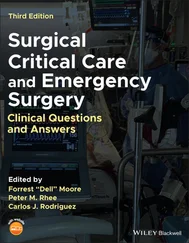NJ, gastro‐jejunal (GJ), and J‐tubes are ideal for patients with gastric dysmotility, severe gastroesophageal reflux, recurrent emesis, and those at risk for pulmonary aspiration. The jejunum is fed continuously and at a lower rate compared to bolus feeds given through a G‐tube. Whereas the NJ and J‐tubes provide direct access to the jejunum, GJ tubes are a hybrid with both gastric and jejunal ports. The gastric port is used for medications or venting the stomach, while the jejunal port is used for continuous enteral nutrition. J‐tubes are secured to the abdominal wall with an internal retention device in the jejunum, while GJ tubes have an internal retention device within the gastric cavity and a jejunal extension that passes through the G‐tube and bypasses the stomach. Jejunal extensions carry the added risk of tube migration, volvulus around the extension tubing, and higher rates of tube clogging secondary to smaller tube size. Percutaneous J‐tubes are rarely used because of the thinness of the jejunal wall and increased risk of complications.
NJ and GJ tube placement requires fluoroscopic or endoscopic guidance for placement. Percutaneous J‐tubes are placed surgically.
Enteral feeding devices are indicated when a patient has a functional GI tract but cannot safely or adequately feed by mouth. This includes patients with a swallowing dysfunction or neurologic disorder. Similarly, patients on a ventilator or those with severe reflux require enteral feeding to prevent aspiration. Finally, patients with inadequate nutrition or in a hypermetabolic state (i.e. cardiac disease, renal disease, or pulmonary disease) may not be able to meet their nutritional demands with oral feeding alone and require enteral feeding as supplementation. The indication for enteral nutrition and duration of feeding needed determine the type of tube recommended. Contraindications specific to each feeding device are listed in Table 1.2.
Enteral feeding devices require daily care to ensure the tube is patent and to protect the surrounding skin from irritation. All feeding devices need to be flushed with room temperature water following each feed or medication administration to prevent clogging. The tubes should also be monitored for tube deterioration that indicates the tube needs to be changed: discoloration, foul smell, and tube deformity. NG and OG tubes need to be monitored for pressure necrosis at the point of insertion and retaped as needed. Similarly, G‐tubes and GJ tubes can cause pressure ulcers if the tissue between the internal and external retention devices is compressed too tightly. Standard G‐tubes should be turned regularly and evaluated to ensure the external retention device sits 1–2 mm above the skin surface without creating a dimple in the skin. Finally, internal balloon retention devices should be checked regularly to confirm the appropriate amount of fluid is in the balloon to prevent tube dislodgement.
Routine Replacement
Temporary Tubes
NG and OG tubes can be placed and replaced by home nursing or properly trained family members ( Table 1.3). NG/OG tubes should be replaced approximately every 7–10 days. Properly sizing the tubing is necessary prior to placement. When choosing a tube size, most feedings can be given with a 6 or 8 Fr tube in pediatric patients and a 12–14 Fr tube in adult patients. Appropriate tube insertion depth is classically measured by taking the feeding tube and measuring from the tip of the nose to the ear lobe and finally to the xyphoid. Several pediatric studies have found that this measurement may underestimate tube depth and result in tubes that terminate in the distal esophagus and pose an aspiration risk. Therefore, in pediatric patients, a better measurement is either using published age‐related height‐based measurements or by measuring from the tip of the nose to the ear lobe and then to the midpoint between the xyphoid and umbilicus. For OG tubes, the measurement should start at the mouth. Once the appropriate tube size and depth of insertion are determined, the same steps may be followed for either NG or OG tube placement, substituting the nasal passages for the oropharynx in the place of OG placement ( Table 1.3). Finally, NG/OG tube placement is an uncomfortable procedure, and patients should be treated with topical lidocaine either as 4% lidocaine spray, 2% lidocaine jelly, or nebulized 4% lidocaine prior to the procedure.
Table 1.2Enteric feeding device contraindications.
| NG/OG feeding tubes |
G‐tubes |
J‐tubes |
| Maxillofacial disordersEsophageal or oropharyngeal tumors or traumaLaryngectomyConfirmed skull or cervical spine injury above C4Clotting dysfunctionIngestion of corrosive substance |
Severe gastroesophageal refluxGastric dysmotilityGastric outlet obstruction |
AscitesCrohn’s diseaseImmunosuppression |
Discuss with appropriate consulting service prior to NG/OG placement
Table 1.3 NG tube insertion.
| Supplies |
| Nasogastric tubeSterile water50 mL catheter tip syringeTape to secure tubing |
| Stepwise procedure |
| Position patient sitting upright with neck midline; avoid hyperextension.Lubricate the NG tip with sterile water. Avoid jelly as it will affect the pH.Direct the tube into one of the nostrils and, keeping the tube horizontal, aim the tube directly posterior. Ask the patient to swallow, as this will help guide the tube into the esophagus by closing the epiglottis.Once the tube passes through the nasopharynx, have the patient lean forward and bend his/her chin while continuing to swallow which will further push the tube down the esophagus.Continue to pass the tube until you reach the predetermined tube depth.Stop and remove the tube if the patient has any signs of respiratory distress.Attach a 50 ml syringe and aspirate contents to the tube.Test aspirate on pH paper, any value below 4.0 is considered gastric contents.Secure the tube by taping to the nose and face. |
NG/OG tube placement can be verified by the aspiration of gastric contents with a pH < 4.0. However, be aware that medications can change the gastric pH, and in a patient with reflux, an esophageal aspirate may have the same pH as a gastric aspirate. Likewise, the aspiration of “gastric fluid” does not confirm gastric placement alone because there is fluid within the bronchial tree and distal esophagus that resembles gastric fluid. In addition, lack of fluid aspirate can lead to falsely believing the tube is not in the stomach when the tube collapses or is above the fluid level. Finally, auscultation is an unreliable method of determining NG/OG tube placement because the sound of an NG tube in the thorax may transmit to the upper abdomen . X‐ray confirmation remains the gold standard for NG/OG tube placement in both adult and pediatric patients.
Bedside placement of ND and NJ feeding tubes is still controversial; however, there are increasingly more studies supporting this practice. Most research has focused on the placement of ND tubes. ND tube placement is similar to NG tube placement; however, the patient is kept in the right‐lateral decubitus position. Several adjunctive measures have been described including the use of promotility agents and gas insufflation to promote tube position past the pylorus. Of note, these techniques are better described in the adult patients and less so in pediatric patients. All post‐pyloric feeding tubes should be confirmed with an X‐ray prior to use.
G‐tubes may be replaced by a caregiver following the first tube change and at least four weeks from initial tube placement ( Table 1.4). Typically, a gastrostomy tube is changed every three to four months. G‐tube replacement should be confirmed with the aspiration of gastric contents and/or pH testing. The gold standard for G‐tube confirmation is a fluoroscopic dye study whereby dye is injected through the G‐tube port and a radiograph is taken to verify dye positioning in the stomach. If there is any trauma to the G‐tube site or if the tube is considered an immature tube (<4 weeks from placement), aspiration of gastric contents and pH testing are inadequate, and the tube site should be verified with a fluoroscopic dye study.
Читать дальше












